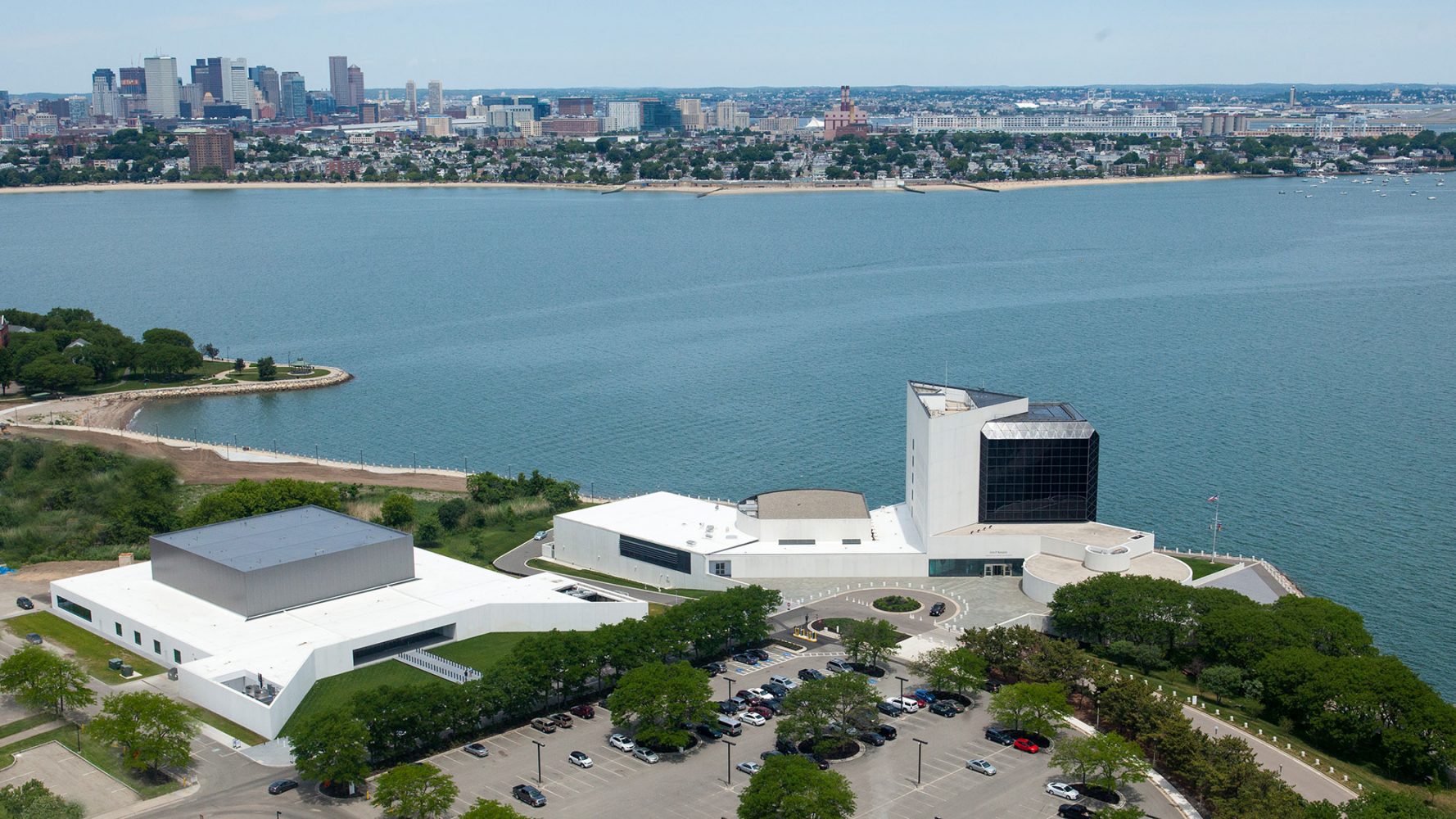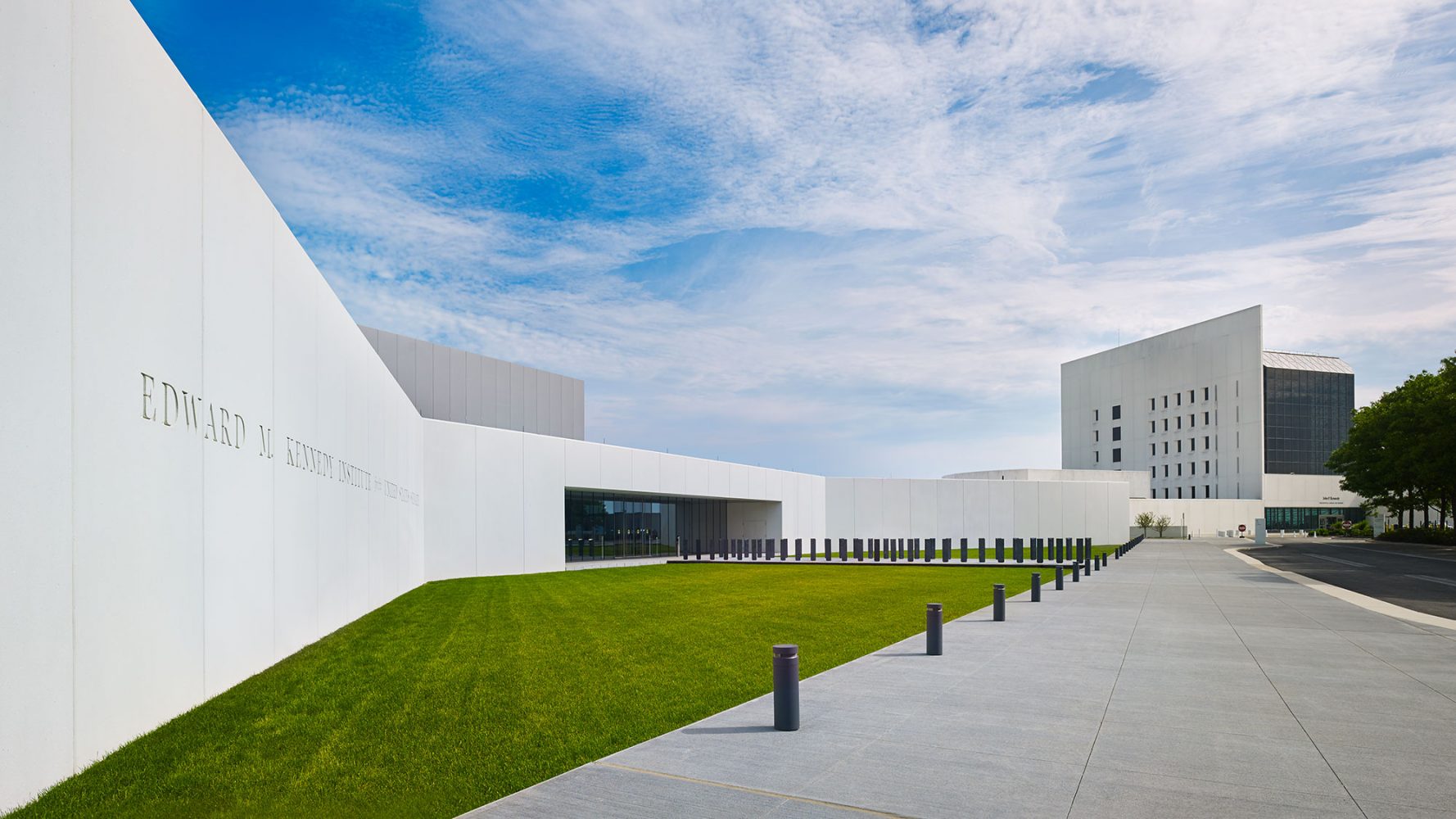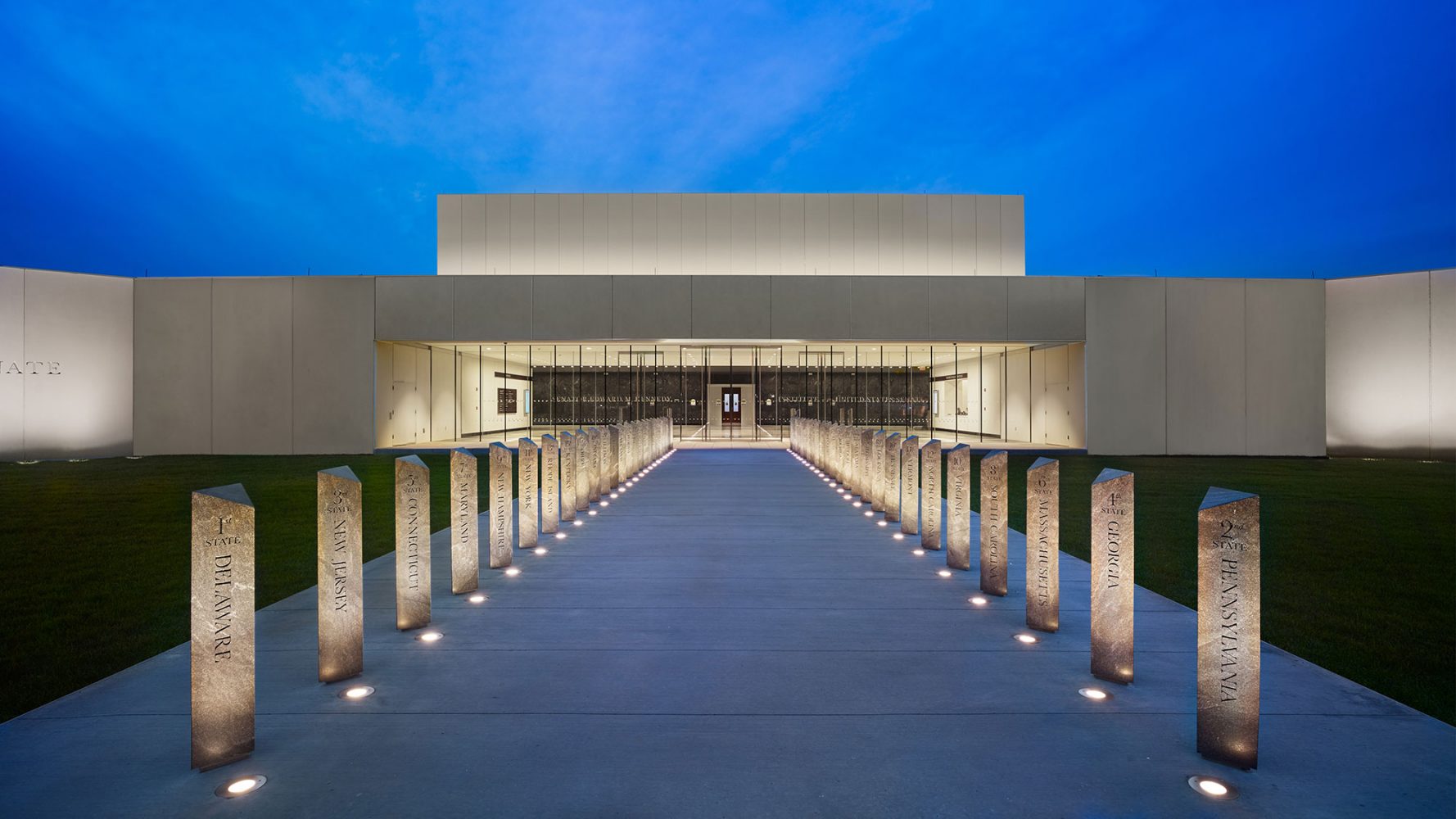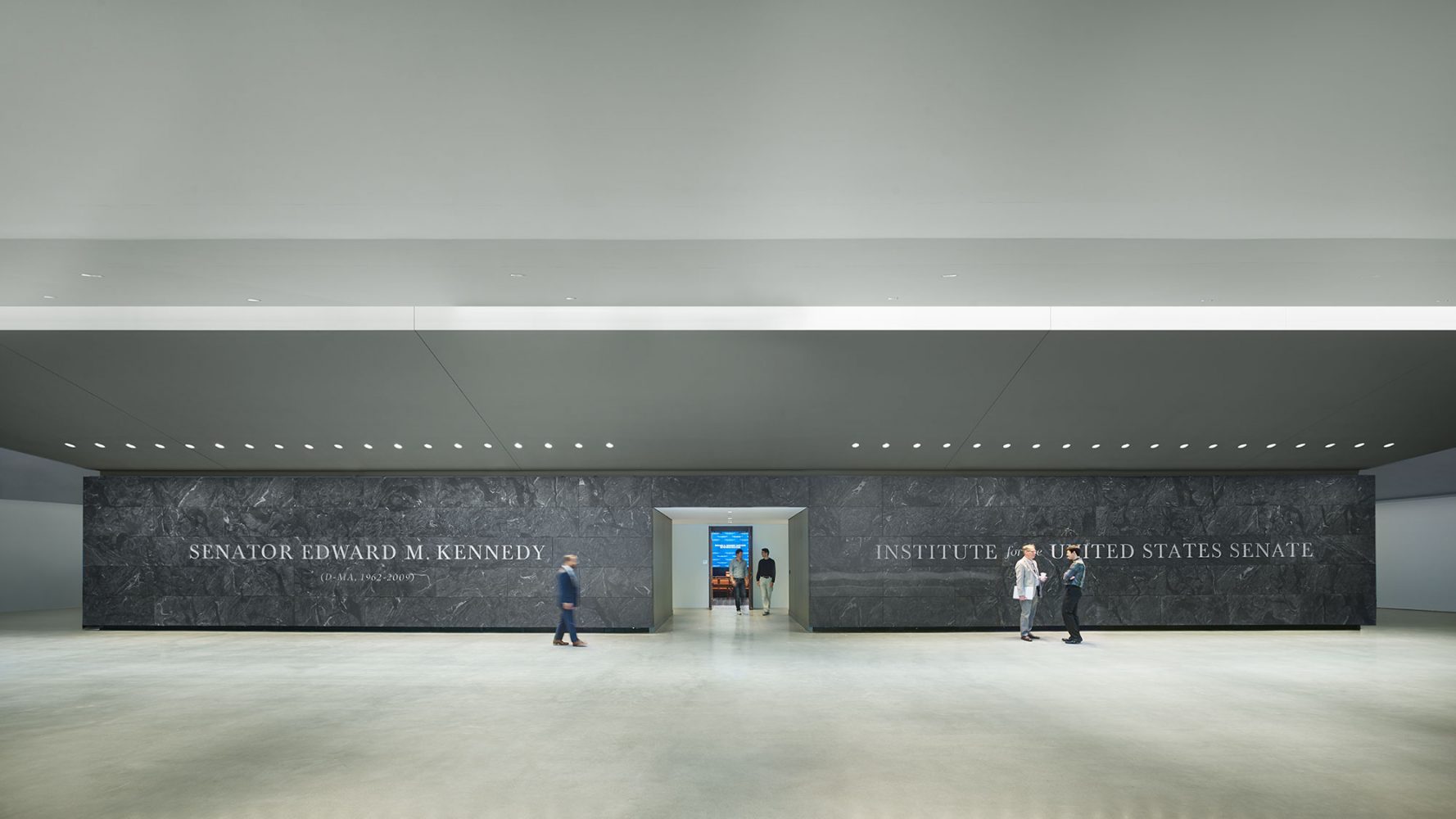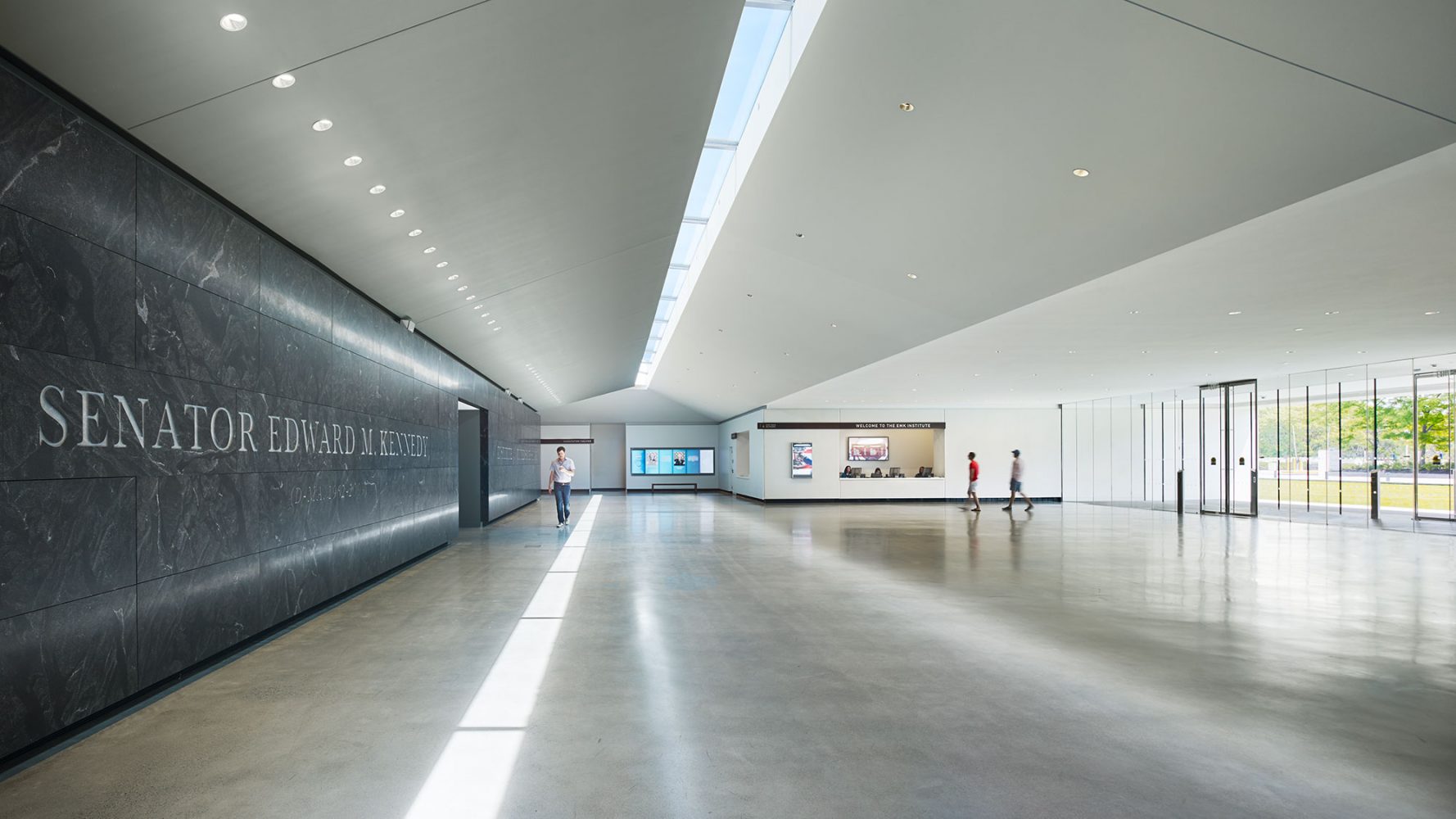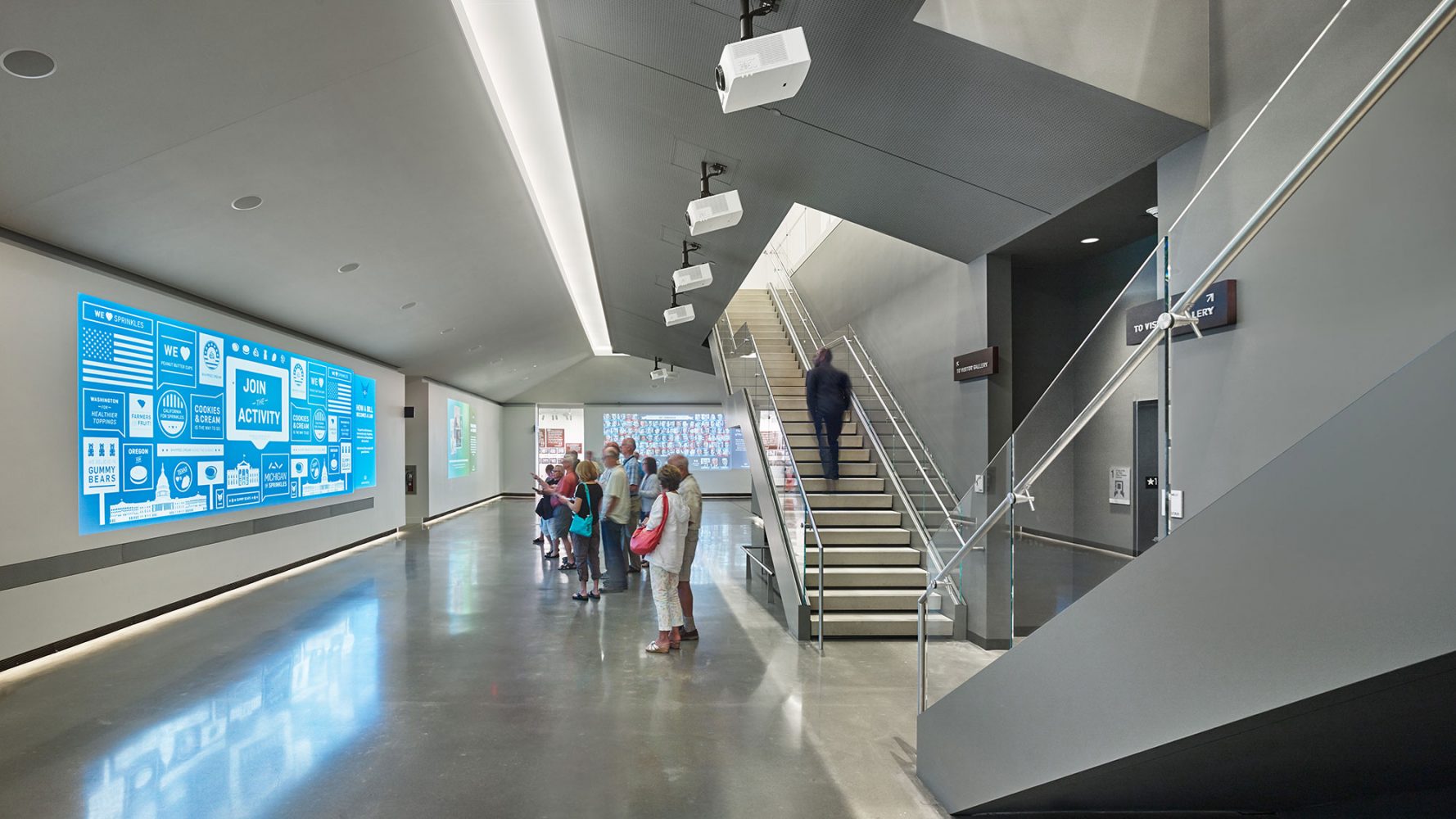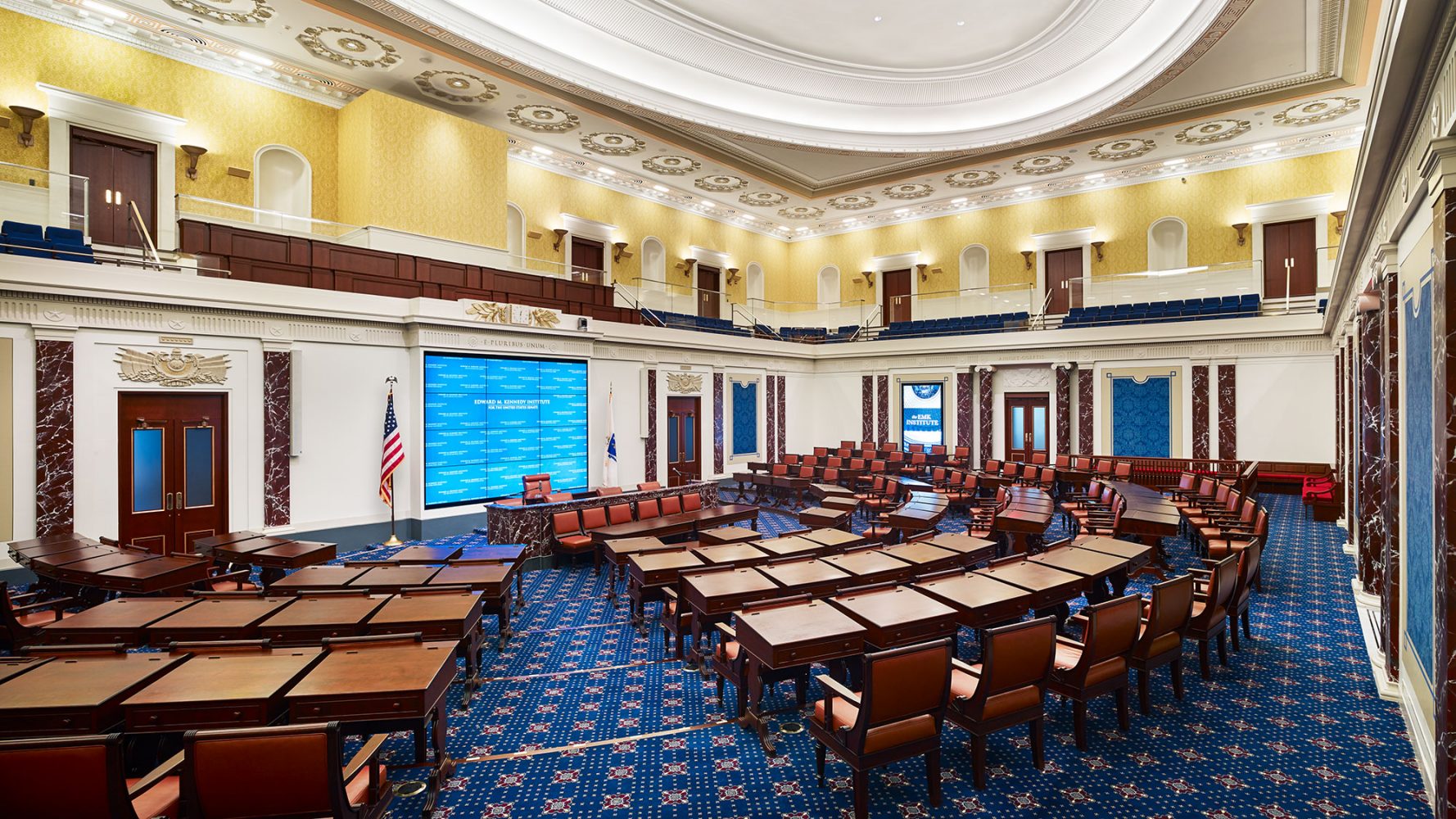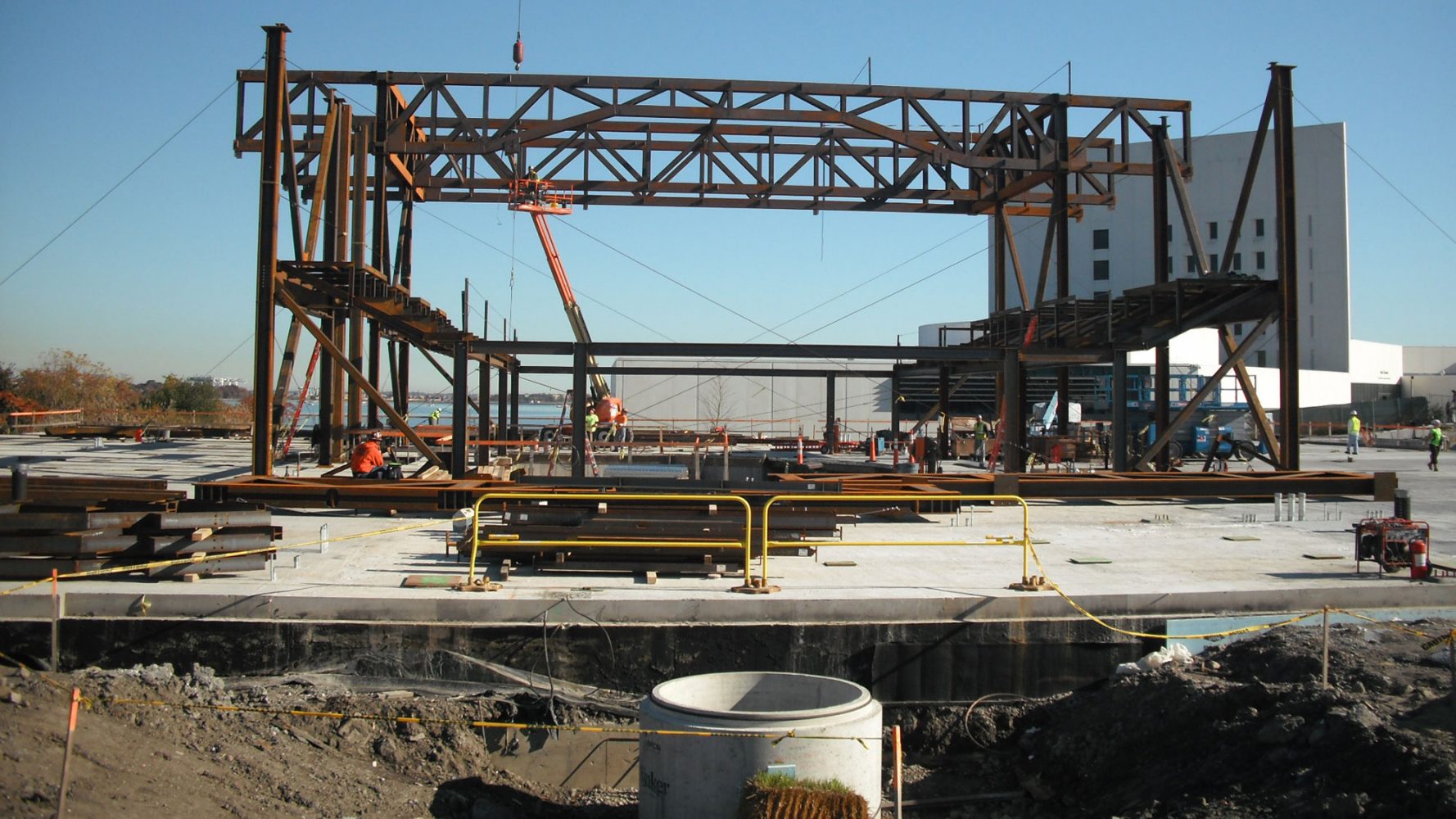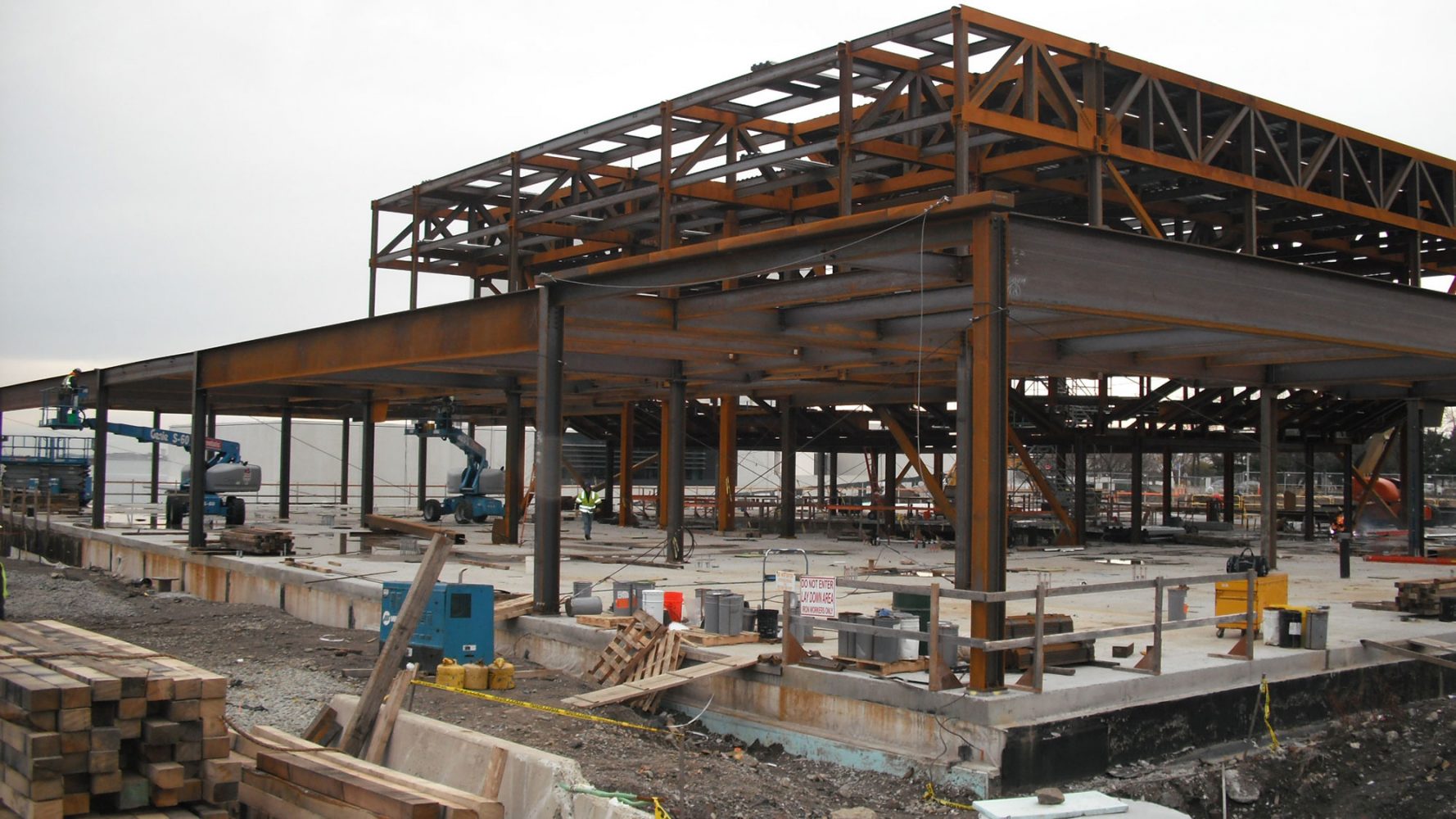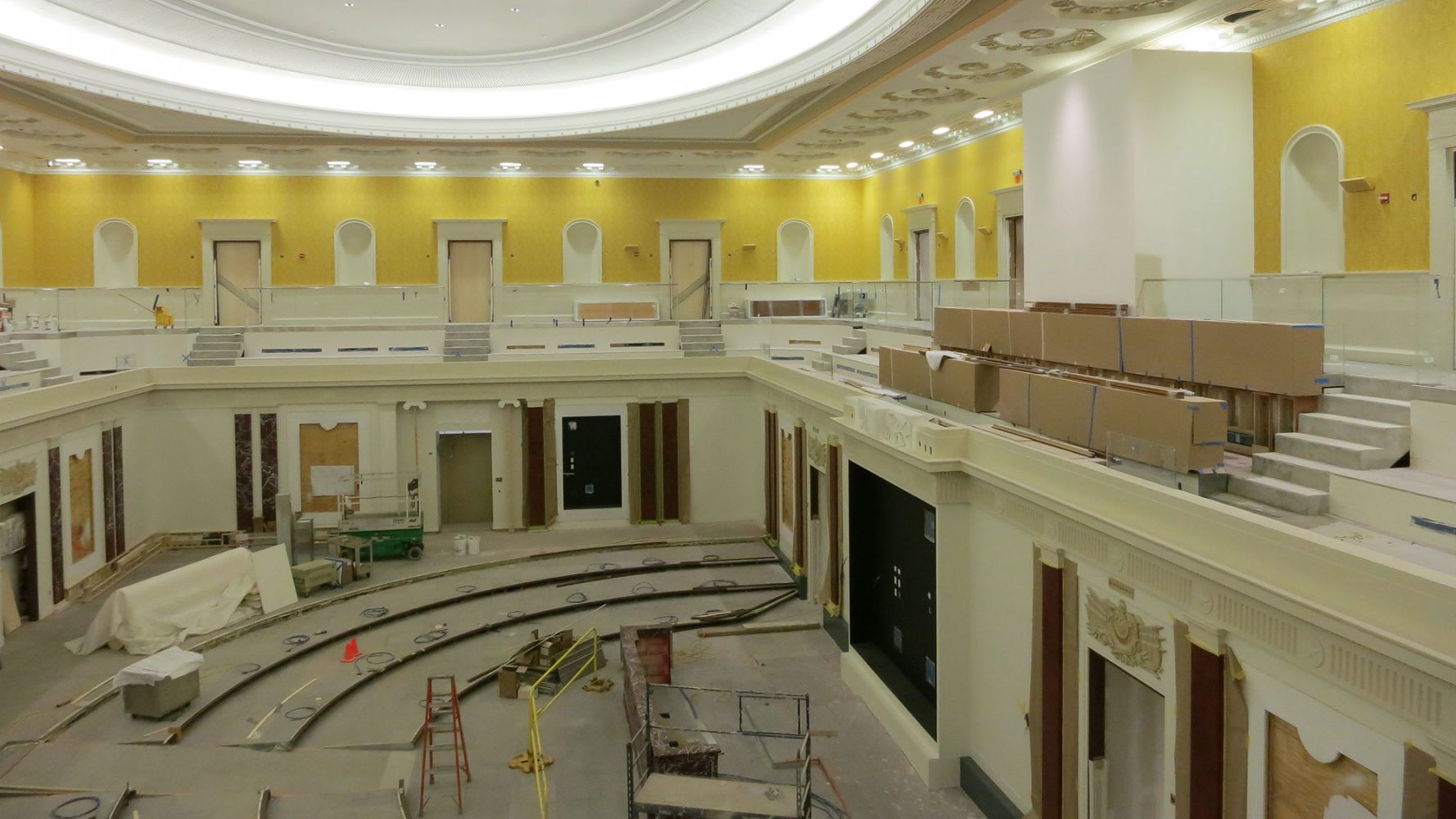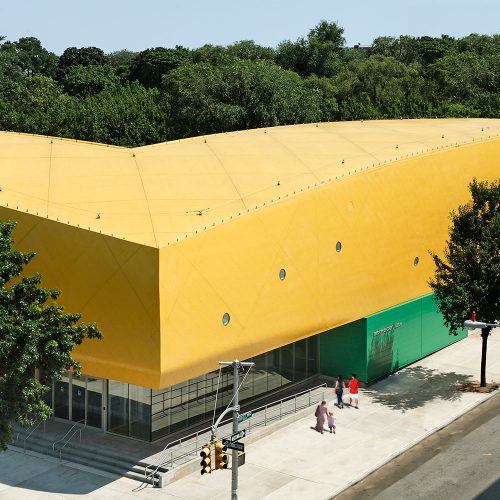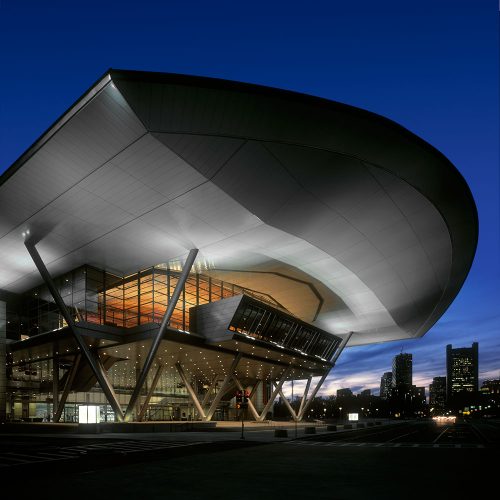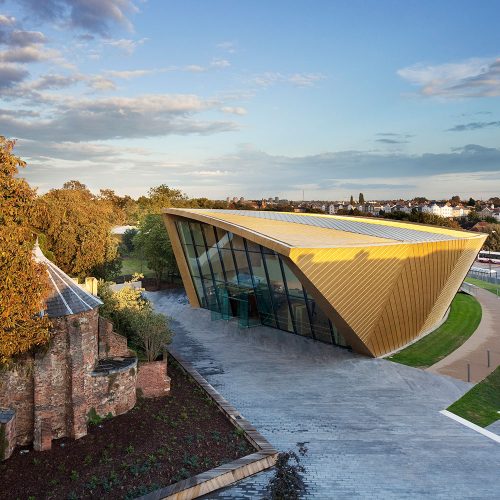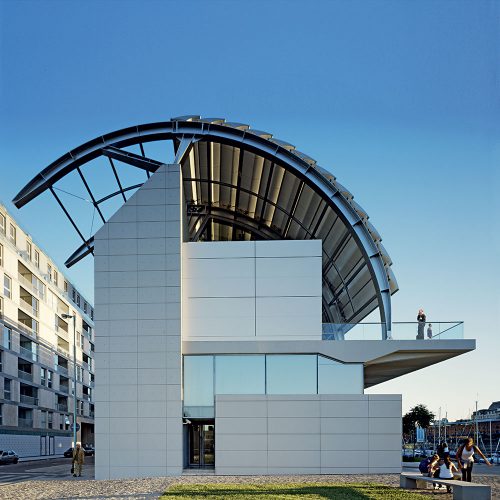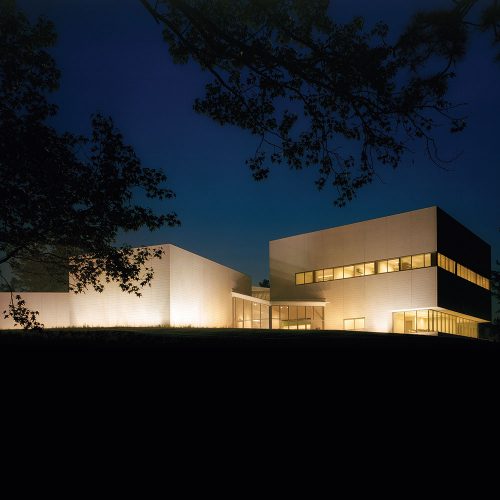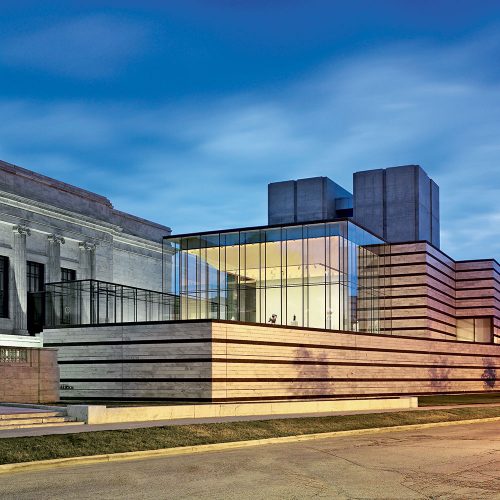Edward M. Kennedy Institute for the United States Senate
Senator Edward M. Kennedy’s historic commitment to the legislative process is communicated and nurtured by a multimodal civic institution in a temple-like structure that is locked in filial dialog with the adjacent architecture of John F. Kennedy’s Presidential Library and Museum.
Located at the northeast end of the University of Massachusetts Boston campus, the Edward M. Kennedy Institute for the United States Senate site simultaneously symbolizes the Kennedy family’s important contribution to American politics and the late senator’s commitment to the legislative process. A public center for civic education, the Institute sits just north of the Massachusetts State Archives and is adjacent to the 1979 John F. Kennedy Presidential Library, designed by I. M. Pei.
The Institute’s design emphasizes a familial connection: consisting of a white square base topped with a smaller dark grey volume that houses a representation of the Senate Chamber, the building responds to the simple, intersecting geometric forms of the JFK Library, which incorporates circular elements and a central cube intersected by a triangular volume. The Senate Chamber cladding is visually separated from the base by a ribbon skylight that expands at the lobby, creating a naturally illuminated reception area. The Institute’s ground level is clad in white concrete with punched window openings that echo the windows of the JFK Library. The black glass of Pei’s library atrium is echoed in the dark grey composite cladding of the central orthogonal volume of the Institute, which extends up vertically, housing the Senate Chamber representation.
The architectural design and organization of the Institute invigorate discourse, encourage participation, and promote the educational agenda through the central placement of the Senate Chamber, which hosts model sessions, lectures, and multimedia presentations with a viewing gallery above accommodating up to 300 spectators, and the concentric layout of exhibit spaces and classroom learning environments. An exhibit hall surrounds the central volume with digital exhibits. Also featured is a recreation of Senator Kennedy’s office and conference room featuring his original furniture, pictures, and personal effects.
The building features total interactivity, immersing visitors within a simulated experience of the day-to-day life of the Senate through a virtual role-playing game. Using individual digital wireless tablets, visitors explore the museum’s spaces physically and digitally, interacting with the displays and other visitors to experience the complexities of passing a law in the U.S. Government.


